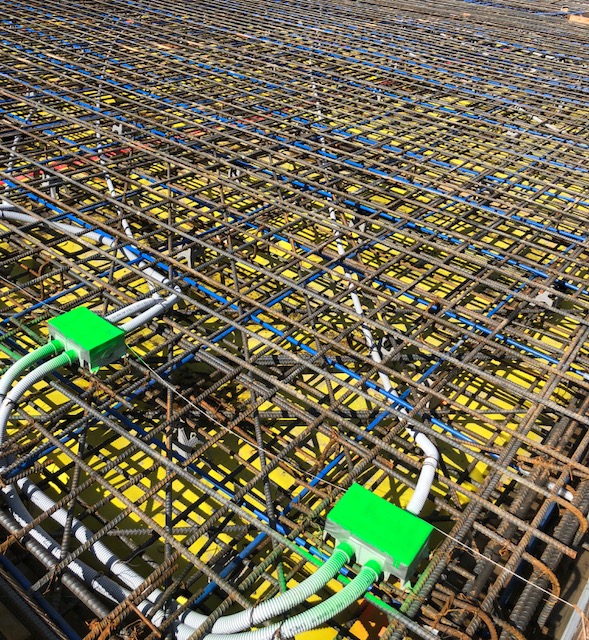RainierGPR Concrete Scanning: Ingenious Solutions for Complicated Jobs
RainierGPR Concrete Scanning: Ingenious Solutions for Complicated Jobs
Blog Article
Exploring the Secret Benefits of Concrete Scanning in Building Projects
In the realm of modern-day building techniques, the use of concrete scanning innovation has actually arised as a pivotal device for making sure job efficiency and architectural honesty. From boosting security procedures to properly discovering utilities concealed underneath the surface, the benefits of concrete scanning are diverse. RainierGPR Concrete Scanning.
Improved Precaution
Using advanced concrete scanning modern technology improves precaution on construction websites by supplying accurate detection of prospective threats concealed beneath the surface. This modern technology makes it possible for building and construction teams to recognize rebar, conduits, post-tension cables, and other blockages before excavation or boring, substantially lowering the threat of crashes. By determining these elements specifically, workers can prevent damaging essential structural elements, thus stopping injuries, hold-ups, and pricey repairs.
In addition, concrete scanning plays a crucial duty in guaranteeing the honesty of existing structures throughout developments or restorations. By discovering weak points, voids, or wear and tear within concrete components, designers can deal with these issues proactively, boosting the overall security and durability of the structure. This aggressive technique not only reduces the threat of architectural failings but also lessens the possibility for mishaps triggered by unanticipated architectural deficiencies.
Basically, the execution of concrete scanning modern technology offers as an aggressive precaution that safeguards both building employees and the architectural honesty of buildings, inevitably adding to the total success and performance of construction jobs. - RainierGPR Concrete Scanning
Accurate Discovery of Utilities
Concrete scanning modern technology promotes specific recognition of below ground utilities, boosting building site safety and effectiveness. Precise discovery of utilities is essential in construction projects to prevent costly damages, job hold-ups, and most notably, ensure the safety and security of workers and the public. By making use of advanced scanning technologies such as ground-penetrating radar (GPR) and electro-magnetic induction, construction teams can map out the area of hidden pipelines, cable televisions, and various other utilities with high degrees of accuracy.

Time and Expense Efficiency

Concrete scanning technology makes it possible for building and construction teams to precisely find rebar, post-tension cable televisions, and various other embedded objects within concrete frameworks. This exact information assists in staying clear of pricey errors such as accidental damage to important elements during boring, reducing, or coring activities. In addition, by identifying possible threats in advance, the demand for expensive repairs or rework because of problems can be decreased, leading to cost savings for the job.

Additionally, the capability to promptly and properly discover utilities below the surface without causing any type of damages not just conserves time however also stops expensive interruptions to existing framework. In general, the time and expense performance benefits of concrete scanning make it a vital device for enhancing building task monitoring and implementation.
Preservation of Architectural Stability
Protecting the structural honesty of buildings and infrastructure is extremely important websites in ensuring long-term security and safety and security. Concrete scanning plays a critical role in this preservation procedure by permitting construction experts to identify potential risks to the structural stability of a building or infrastructure prior to they escalate into significant concerns. Through using sophisticated scanning innovations such as ground-penetrating radar (GPR) and electromagnetic induction, building and construction teams can non-invasively analyze the condition of concrete frameworks, locate rebar, post-tension cables, and various other embedded elements, and determine any voids, splits, or damage within the concrete.
Improved Project Preparation
In order to make sure the successful implementation of building and construction jobs, meticulous focus to information and thorough preparation are important parts that originate from a comprehensive understanding of the architectural conditions recognized through concrete scanning. Improved task planning, helped with by concrete scanning, permits building groups to preemptively deal with possible difficulties, allot resources extra efficiently, and develop realistic timelines. By precisely determining the area of rebar, post-tension cables, and other ingrained objects within concrete frameworks, job supervisors can develop extra exact construction plans that decrease the danger of costly errors or hold-ups. In addition, the data obtained from concrete scanning allows stakeholders to make enlightened choices concerning structural modifications, improvements, or expansions, causing smoother job changes and boosted overall task results. Eventually, including concrete scanning right into the task planning phase improves sychronisation amongst staff member, promotes positive problem-solving, and adds to the effective distribution of construction jobs within budget and schedule constraints.
Verdict
In conclusion, concrete scanning provides numerous benefits in building tasks. By improving security measures, precisely detecting utilities, enhancing time and price performance, protecting structural honesty, and assisting in job planning, concrete scanning confirms to be an important device for successful task implementation. Its capability to reduce threats, enhance efficiency, and make sure task integrity makes it an essential property for building and construction specialists.
In the realm of modern-day building practices, the application of concrete scanning technology has actually emerged this link as a pivotal device for ensuring task efficiency and architectural stability.Concrete scanning technology enables construction groups to accurately situate rebar, post-tension wires, and various other embedded items within concrete structures. With the use of innovative scanning modern technologies such as ground-penetrating radar (GPR) and electro-magnetic induction, construction teams can non-invasively evaluate the problem of concrete frameworks, situate rebar, post-tension cable televisions, and other ingrained elements, and determine any kind of spaces, fractures, or degeneration within the concrete.
In order to make sure the effective implementation of construction jobs, precise interest to information and thorough preparation are crucial components that stem from a detailed understanding of the architectural conditions determined with concrete scanning. Inevitably, incorporating concrete scanning into the job planning phase boosts control among team members, fosters positive analytical, and adds to the effective shipment of construction projects within budget and routine constraints.
Report this page